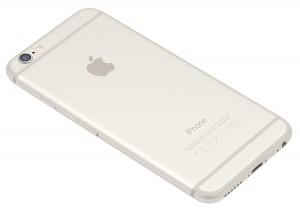Apple has finally relented to a market that demands bigger and bigger smartphones with its newest hero device, the iPhone 6. As always, Apple has created a phone whose specs aren’t terribly impressive on paper — trudging along a year or two behind those offered by Android flagships — but offers a premium feel and robust performance that many of its rivals can’t match.
With exceptional performance, a highly modern design, a fantastic display, and an amazing camera, the iPhone 6 is the best Apple smartphone to date. However, it still comes with several shortcomings, and it would take almost blind Apple fandom to ignore them. But are those flaws enough to bring down the rest of Apple’s latest juggernaut? Let’s find out.
Build and Design
Stock photos of iPhone 6 don’t do it justice, as it makes a far better impression when it’s actually in your hands. Apple has again managed to create a smartphone that’s both modern and robust; even after just a few moments of holding it, it’s clear that this is a premium device of supreme craftsmanship. The iPhone 6′s 4.7-inch display is comparable to those on “compact” Android flagships, but it very much feels like an iPhone still, so it won’t feel to foreign to longtime Apple customers. Its combination of just-right screen size, slim dimensions, and light weight are excellent. If you hold an iPhone 5/5s (or the smaller iPhone 4/4S) after holding the iPhone 6, the last-gen models almost immediately feel outdated, and it becomes hard to believe that Apple’s gone this long without joining in on the bigger screens trend.
The iPhone 6 weighs 129 grams and is both quite tall and exceptionally slim for a 4.7-inch phone, measuring 138 x 67 x 6.9 mm (5.44 x 2.64 x 0.27 in). The display-surface-to-phone ratio is the greatest design flaw here, with the bezels above and below the display coming off as too thick. (The side ones are just fine, however.) This is largely a problem only when you compare the iPhone 6 to similarly-sized Android devices – the differences aren’t too dramatic compared to past Apple phones – but for the OS agnostic, it leaves something to be desired.
Unlike on the iPhone 5/5S, the iPhone 6’s back doesn’t sport any glass. Apart from the display, the whole thing has been carved out of a single piece of aluminum, with plastic stripes on the back for device’s antennas. (That plastic doesn’t diminish the premium impression left by the phone, by the way, despite its lesser material.) Furthermore, the 6’s sides are now rounded, which greatly helps a phone of these dimensions lay more naturally in your palms. These smoothened edges blend wonderfully with the phone’s all-glass front, and make swiping across the whole setup a real pleasure.
Outside of its growth spurt, the layout of the iPhone 6 should be instantly familiar to anyone who has come across an iPhone in the past. The Home key below the display is also the TouchID sensor, while the speaker, several sensors, and a 1.2-megapixel front camera are located above the screen. The back side only includes the 8-megapixel camera with an LED flash, which juts out and keeps the device from laying totally straight on a flat surface – a possible problem for design perfectionists, but nothing to get too worked up about.
The left edge includes the familiar volume rocker and mute switch. The latter there is somewhat smaller than before, but is still easy to find and leaves a pleasant clicky feeling when switched. Along with the nanoSIM card slot, the right side now houses the Power key up a little bit higher than before — a smart change to accommodate the device’s larger profile. The top of the iPhone 6 doesn’t have anything, while the bottom comes with the Lighting port flanked by a 3.5 mm audio jack on the left, and mono speaker grilles on the right.
Display
The 4.7-inch IPS LED-backlit LCD display is one of the iPhone 6′s biggest highlights. Although the screen size has increased, Apple has maintained the 326 ppi pixel density from the iPhone 5S, taking the resolution from 640 x 1136 pixels to 750 x 1334 pixels. This is a bit more than 720p resolution, but still nowhere near the 1080p you can find on most other flagships nowadays. On paper, this means that the iPhone 6 is as sharp as Android phones from two or three years ago.
In practice, however, this panel is far more of a delight than its specs would suggest. Simply put, the iPhone 6 should put the prevailing theory that “more pixels equals a better screen” to bed. The fact that the iPhone 6 Plus has a greater density yet doesn’t look any different to the naked eye only furthers this.
Sharpness on the iPhone 6 is surprisingly exceptional, with crisp text and smooth transitions in OS animations and graphics-heavy games. The same praise goes for its accurate and vivid colors, though the biggest plus here may be the panel’s contrast ratios. Very dark blacks and milky whites maintain their intensity under direct sunlight and at wider viewing angles, and outdoor performance in general is as good as it’s ever been. In fact, the latter aspect is arguably superior to that of modern AMOLED screens.
The post Apple iPhone 6 Review appeared first on Brighthand.com.


